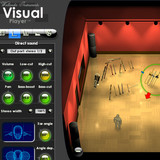Wallander Instruments has released version 2.30 of Wallander Instruments Visual Instruments (WIVI), a collection of virtual instruments that combine advanced behavioral modeling with extensive amounts of sound data extracted from acoustic measurements and recordings of real instruments.
Changes in WIVI v2.30
- Section Builder for instruments. This window now appears when clicking the ‘+’ button to add instruments, and allows for adding sections easily. Groups of instruments added through the Section Builder (pictured below) are automatically configured with polyphonic mode, timing differences and orchestral positioning.
- All instruments have undergone tonal and behavioral improvements, in particular the saxophones, for which many instruments have been remade from scratch from new recordings. To update to the new player you must also download new instruments.
- Shift + mousewheel can now be used for setting parameter values/turning knobs.
- Overblow mode for saxophones added.
- Improved reverb presets (environments). There is now also a low damping parameter for reverbs.
- Smart release. This is an innovative feature which automatically analyzes the performance and changes the note release time, so that even crude performances sound realistic. When adding a new instrument to stage in v2.30, the instrument will use this mode by default. Old projects are not affected.
- New breath noise parameters. Shimmer (level fluctuations), jitter (pitch fluctuations) and modulation (changes the character of the noise).
- The most popular parameters have been moved to the General Settings panel, and some less often used parameters have also been moved from this panel. You will find that the most important features are readily accessible now, including mutes, polyphonic mode, ADSR, EQ, randomize timing and key switches.
- New “width” instrument mixer parameter. This feature overrides the binaural stereo width of the instrument.
- Wah-wah CC is now the Timbre CC.
- Run out of breath, new ADSR parameter. This shortens the envelope time when playing at higher dynamics. Produces a more natural envelope at high dynamics, while preserving the possibility of playing longer notes at softer dynamics.
- Easy input device editor for easily choosing input device. You can now also use a combination of two controllers for dynamics. The new default mode is Modulation Wheel + Velocity because it turned out to be a very successful way of controlling WIVI without a breath controller.
- Faster loading times on some systems.
- WIVI now responds to a number of key events. You can use +/- for quickly adding instruments, R for resetting a parameter value (you must hover its display with the mouse) and the numeric keypad for changing parameter values (Num Lock must be activated). You can also enter instrument names using the keyboard. Please note that you may have to click inside the WIVI window to activate this, when going between windows. Also, some hosts may not allow key events for plug-ins.
- Merge/split instruments is a new grouping feature, and allows more than one instrument to share the same stage instrument. This cleans up the stage when working with duplicate instruments for keyswitches. You switch between your merged instruments by clicking repeatedly on the shown instrument.
- New reverb parameter, Ear distance. This is for advanced users only, and allows you to set the binaural width on sound layer level, without breaking panning.
- Some minor bugfixes.
WIVI 2.30 for PC and Mac (VST/AU/RTAS) is now available to download for registered users.
More information: Wallander Instruments
 Check out ArrangerKing, a plugin designed to help you complete your songs!
Check out ArrangerKing, a plugin designed to help you complete your songs!

